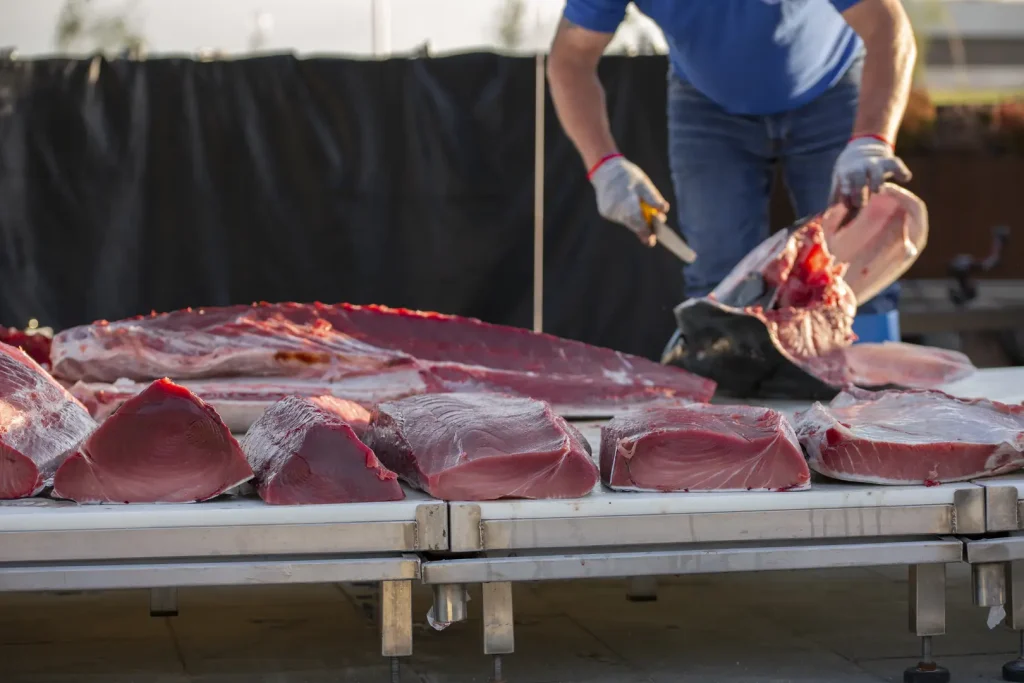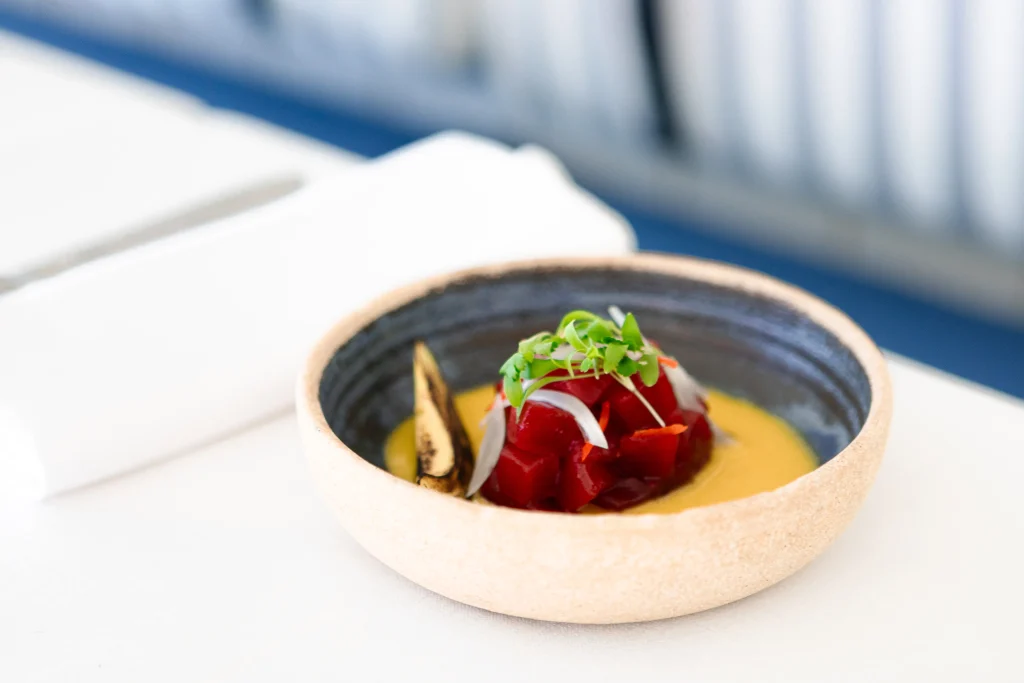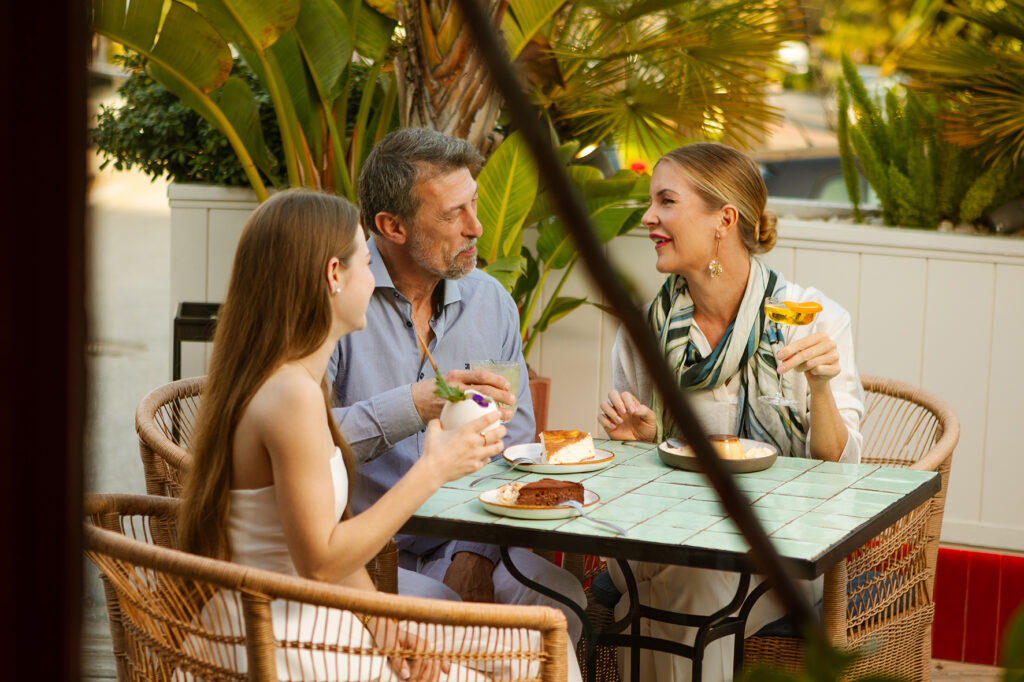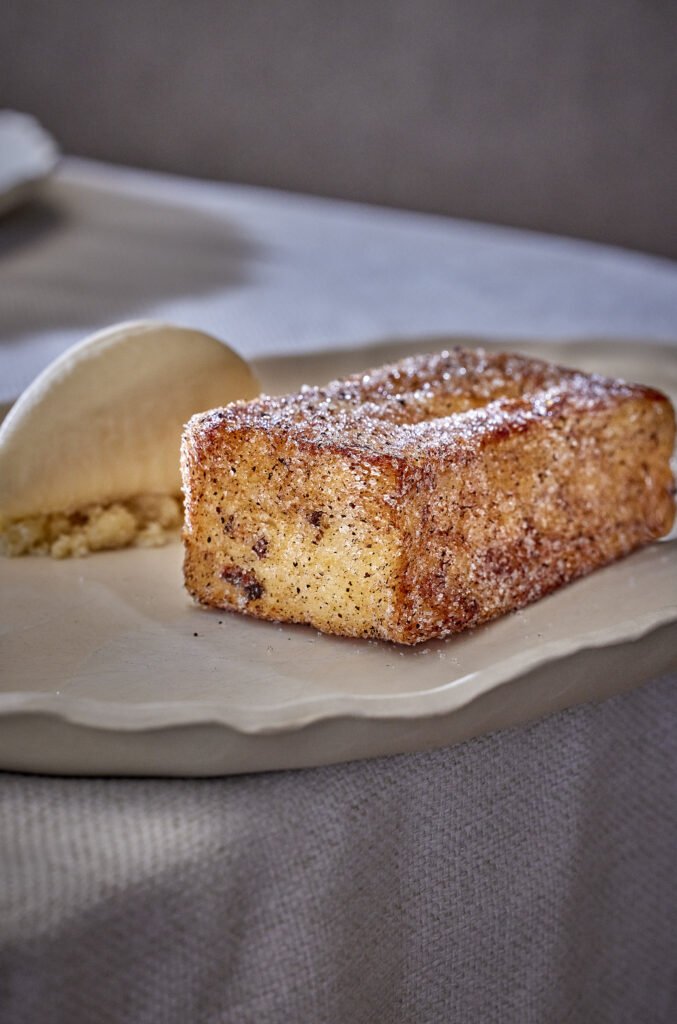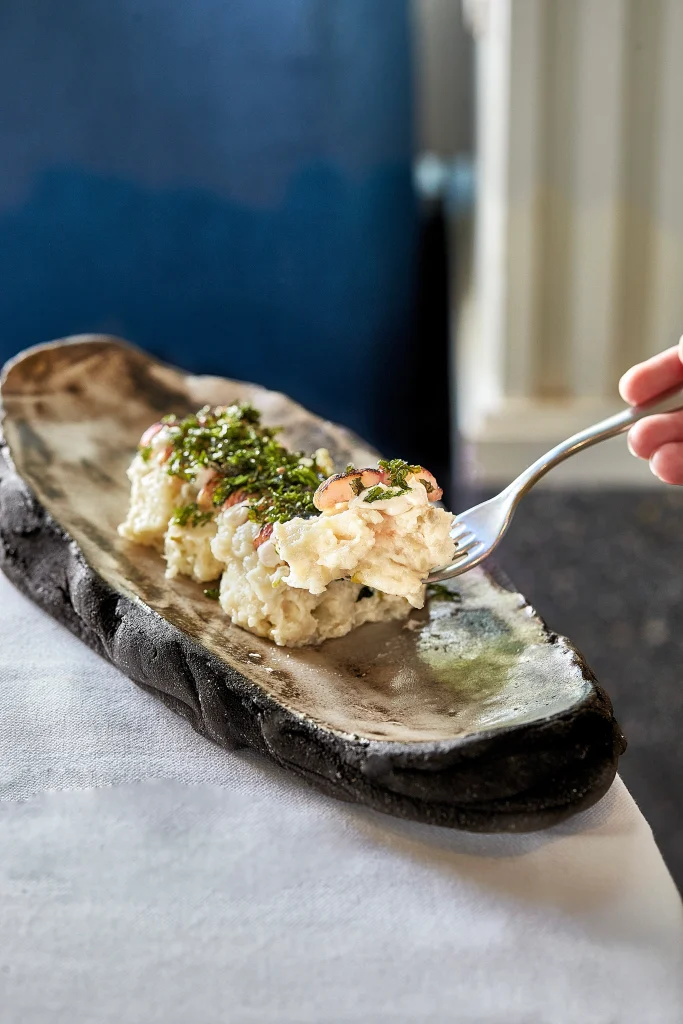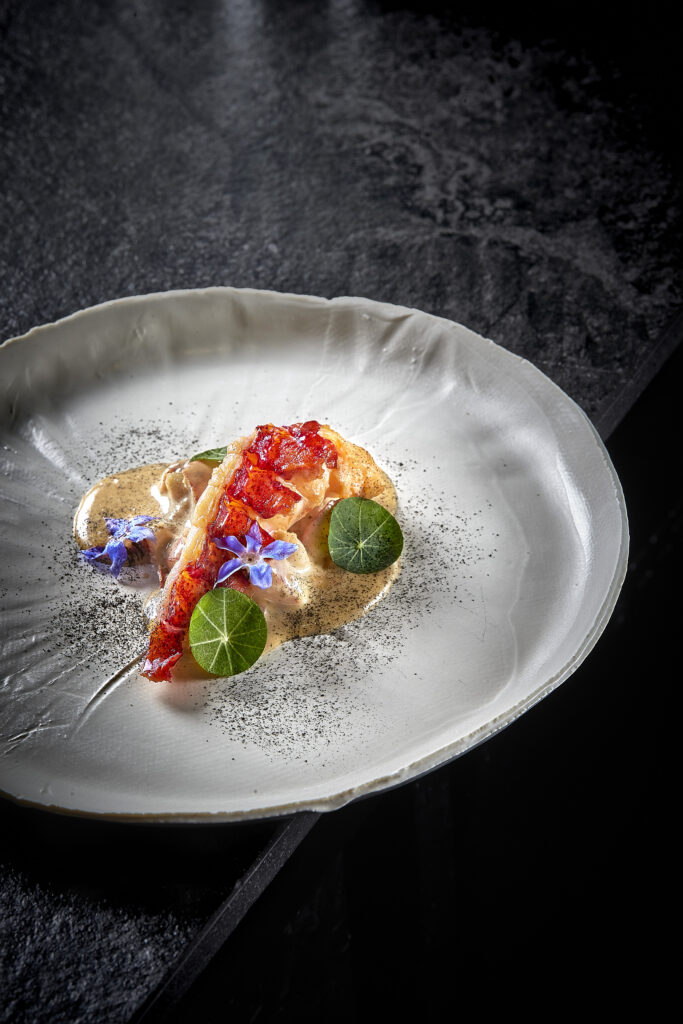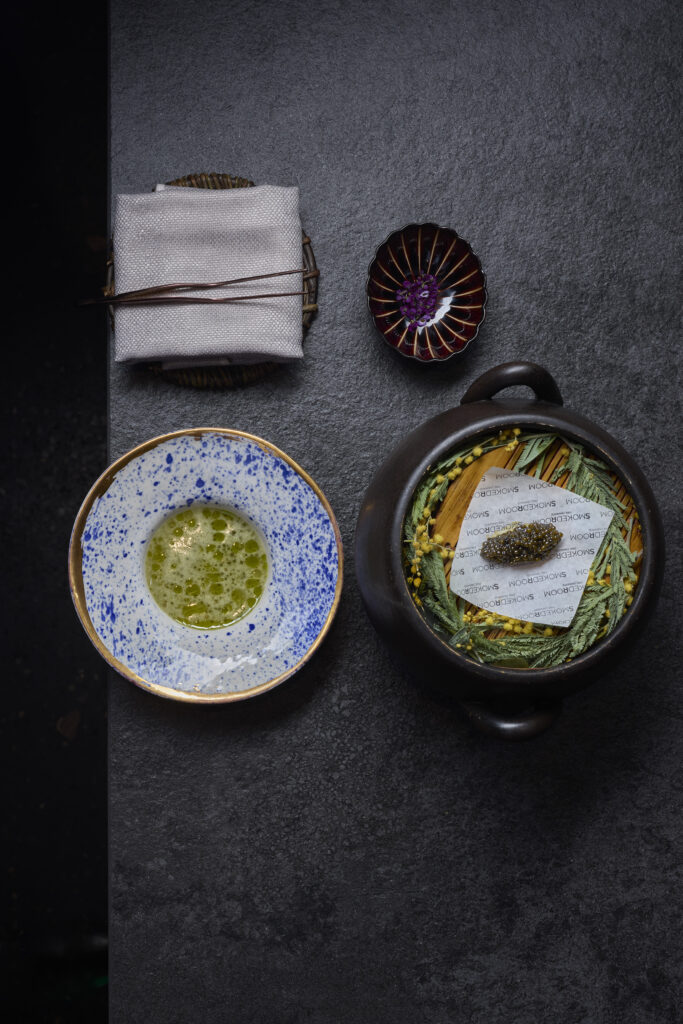At Lobito de Mar in Marbella and Madrid, the tuna ribeye carpaccio is an unmissable experience. What makes it unique is its origin: a cut from the white loin of the tuna, specifically from the area between ribs 2, 3, 4, and 5. This section holds three prized and precise cuts: the descargamento, the tarantelo, and the ventresca. Together, they create a perfect balance of fat, texture, and flavor—a harmony that pays tribute to the most revered fish in the Atlantic. The ancient almadraba technique allows these specimens to be captured at their peak. Fishing is carried out with deep respect for the sea and its natural cycles. This is the only way to obtain a product that is fresh, seasonal, and of exceptional quality. This tuna carpaccio is no improvisation: it is carefully selected, refined, and honored. Its flavor connects sea and land, tradition and innovation, the present and memory.
Technique, Precision, and Respect
The tuna ribeye that reaches the table at Lobito de Mar is no coincidence. It comes from pieces selected with extreme meticulousness. Each tuna is caught using the almadraba method—a sustainable and regulated system still practiced along the coast of Cádiz. Thanks to the work of Gadira, the product retains its purity and properties. From each tuna, only the best is chosen: the descargamento brings firmness, the tarantelo offers juiciness, and the ventresca contributes a noble, soft, and unctuous fat. This combination turns the carpaccio into a refined and flavorful bite. In the hands of Dani García’s team, the tuna reaches a new dimension. Each slice is cut with millimetric precision—layer by layer—with technique and respect. The result is a light, clean, and characterful dish. A proposal where the product takes center stage, without unnecessary adornment. Because when you’re working with true tuna, nothing else is needed. Every detail is designed to highlight the marine essence of each bite.
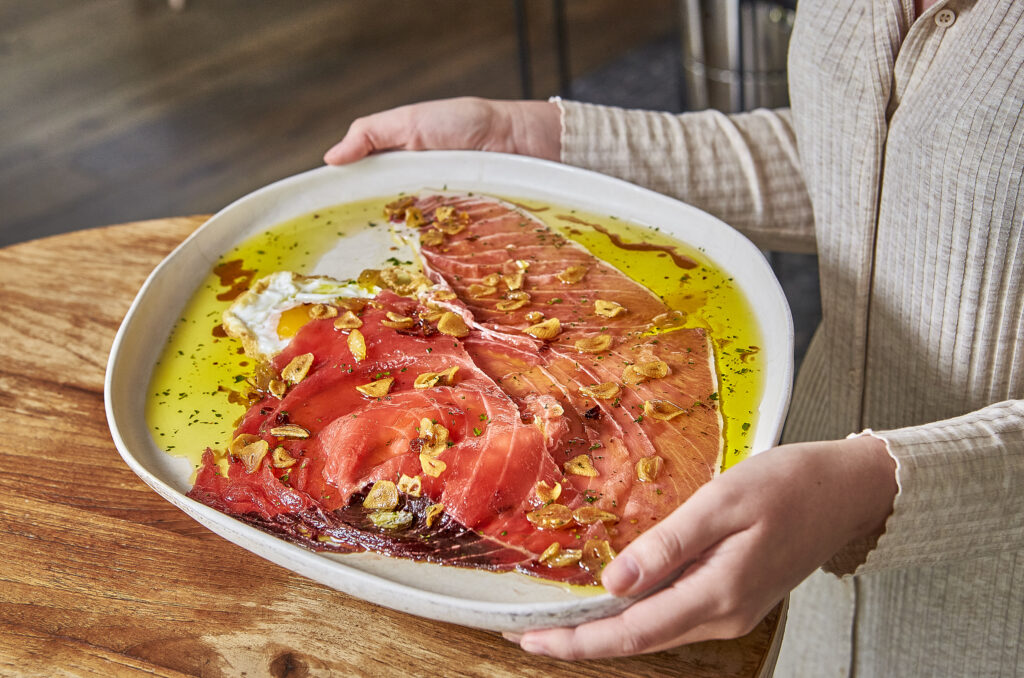
A Marine Jewel in Two Cities
This tuna carpaccio is served in both Marbella and Madrid. At Lobito de Mar, the setting amplifies the experience: elegant, fresh, and with a seafaring soul. It’s not just about eating—it’s about living the Mediterranean through the plate. Behind each slice lies a story that begins in the southern sea, passes through the expert hands of Gadira, and ends in the kitchen of Dani García. A story of respect, quality, and commitment to authentic flavor. In Madrid, this tuna carpaccio brings the sea to the city in all its intensity. In Marbella, it’s savored with the gentle sound of waves in the background. Both cities offer a deeply marine experience: emotion, technique, and genuine flavor. This dish represents the connection between the age-old tradition of almadraba and Dani García’s contemporary vision.
